

Jon Clements, Editor
Current degree day accumulations
2014 New England Tree Fruit Management Guide Available
| UMass Cold Spring Orchard, Belchertown, MA |
21-April |
| Base 43 (SkyBit) | 149 |
| Base 50 (NEWA) | 77 |
Current bud stages. April 21, 2014, UMass Cold Spring Orchard, Belchertown, MA
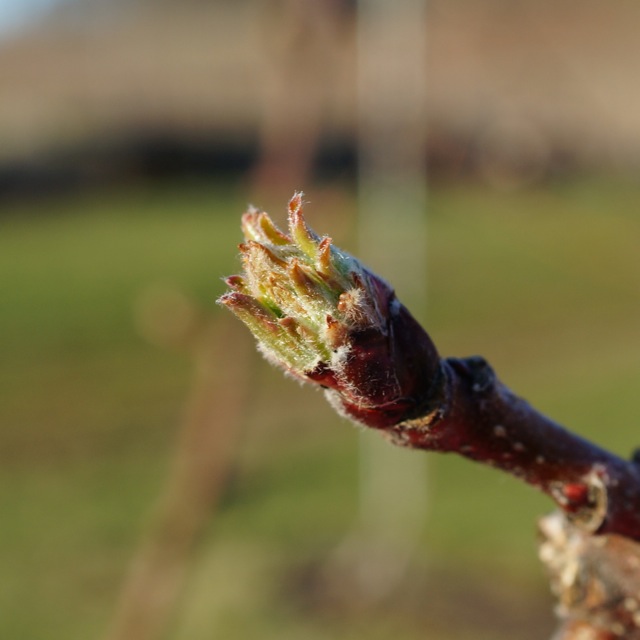 |
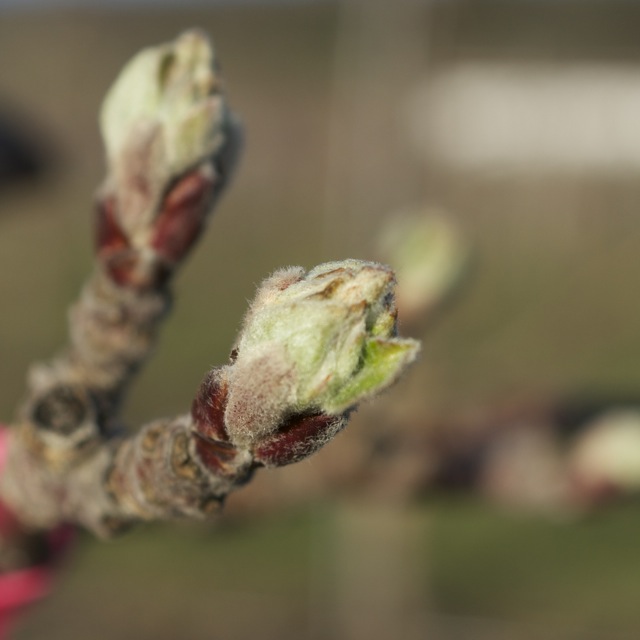 |
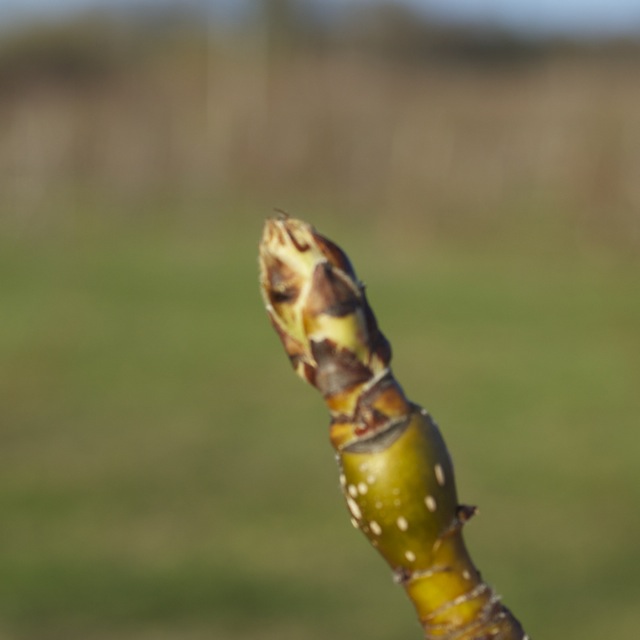 |
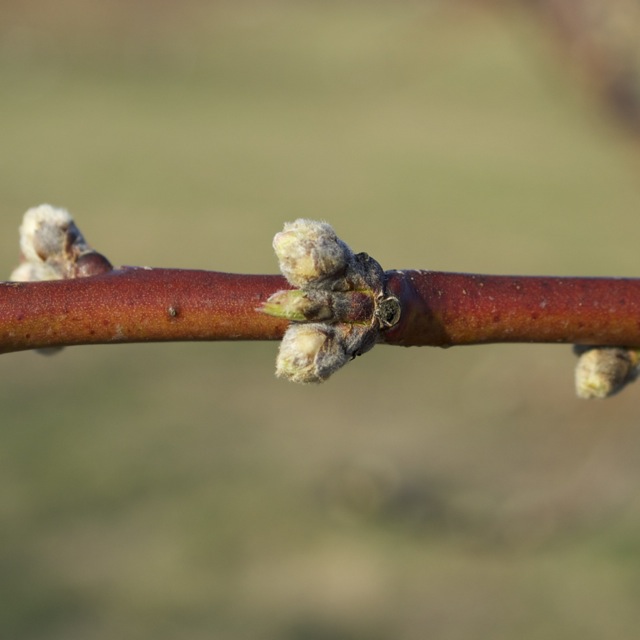 |
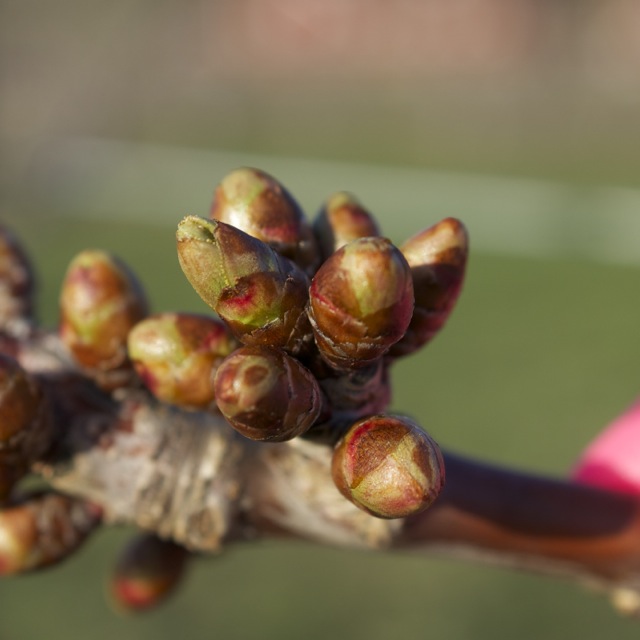 |
Honeycrisp apple quarter inch green |
McIntosh apple quarter inch green+ |
Kosui Asian Pear |
PF-14 Jersey peach swollen bud |
Rainier sweet cherry swollen bud |
| Coming events | Degree days (Base 43) |
| Green fruitworm flight peak | 97-213 |
| Pear psylla 1st oviposition | 40-126 |
| Rebanded leafroller 1st catch | 110-178 |
| Spotted tentiform leafminer 1st catch | 113-213 |
| Rosy apple aphid nymphs present | 134-244 |
| McIntosh green tip | 97-145 |
14-May, 2014 Fruit Twilight Meeting at Dowse Orchard, 98 North Main St., Sherborn, MA. 5:30 to 7:30 PM. 1 pesticide credit will be offered. Refreshments/snack will be served. Orchard walk, current orchard management updates. $25 meeting fee ($20 for MFGA members.) Contact: Jon Clements, 413-478-7219. Pre-registration is not necessary.
21-May, 2014 Fruit Twilight Meeting at Alyson's Orchard, 57 Alyson's Lane, Walpole, NH (www.alysonsorchard.com). 5:00 to 8:00 PM. 2 pesticide credits will be offered. Refreshments/snack will be served. Contact: George Hamilton, 603-641-6060.
This time of the year is pretty overwhelming. Weather issues. Equipment shake-out. Tree planting. Apple scab? Assessing winter injury to peach flower buds.
On apple scab, we may (or may not) have had our first official infection period with enough green tissue to worry about in the last day. If you had a very clean, scab-free orchard last year, no worry. (Ascopsor maturity very low and not too much green tissue. BUT, if you had a lot of scab at the end of last season on foliage, I would be concerned and if you did not have a good copper or other fungicide on before the recent wetting, I would consider applying a fungicide with some kick-back (see 2014 New England Tree Fruyit Management Guide) as soon as the wind dies down. NEWA for Belchertown indicates we did have an infection period with 8% ascopspore maturity. Dan Cooley, Arthur Tuttle, and myself are in the midst of evaluating four different sources of scab models, it's a bit overwhelming, but we have some real good applications now for assessing the apple scab situation on a site-by-site basis. Stay tuned.
Regarding winter injury to peach flower buds, what are you seeing? It's easy to tell now if flower buds are damaged, as you won't see any swelling or 'pink.' Unfortunately it appears to have gotten cold enough in January to do some damage to some orchards. See picture below. A lot depends on site (just how cold it got, anything less than -10 F. spells trouble) and variety. I would be very interested in hearing if you are seeing a lack of swelling buds.
We just got through planting a Flamin Fury® (Paul Friday) peach block with just over a dozen of Paul's newest 'PF' varieties. (10 trees each, thanks Stark Bros. and the UMass Orchard staff for contributing.) We planted at 8 ft. X 18 ft. and plan on training the trees to a modified "Crown quad-V" system. Hope you are getting trees in the ground this week during the relatively dry weather. It looks like a major wetting (and scab infection period!) is in the forecast for the middle of next week. JC
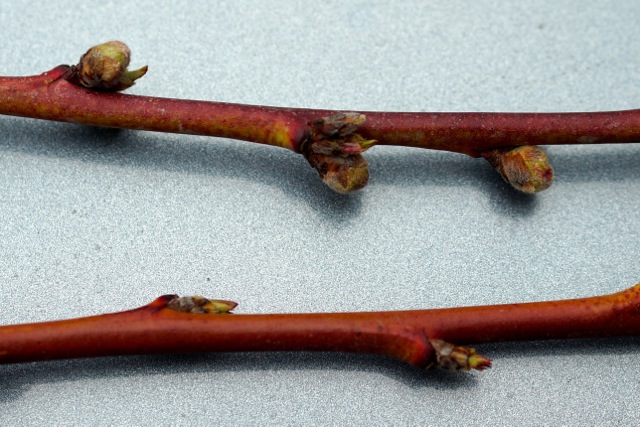 |
Peach shoots collected 4/22/2014 in same orchard, adjacent row, two different varieties. Top shoot has viable, swollen peach flower buds. Bottom shoot had non-existent, dried-up flower buds that were likely damaged by mid-winter cold temperature of -10 F. or below. Winter damage is highly site-dependent (how cold it got) and variety-dependent. |
A collaboration of tree fruit specialists in all six New England states, and with Cornell University, the 2014 New England Tree Fruit Management Guide (NETFMG) is a must-have for all commercial orchardists. The 2014 NETFMG is 276 pages and includes chapters on: Integrated Crop & Pest Management; Organic Tree Fruit Production in New England; Pesticide and Sprayer Information; Characteristics of Crop Protectants Used on Tree Fruits; Disease, Insect, Weed, Wildlife, and Nutrient Management; and specific spray management recommendations for Apples, Pears, Cherries, Peaches and Nectarines, Apricots, and Plums and Prunes. The 2014 NETFMG is available for purchase for $55 (plus shipping) on the UMass Extension Bookstore, http://umassextensionbookstore.com/. The 2014 NETFMG will also be available for sale at Fruit Twilight Meetings. (But supply is limited.)
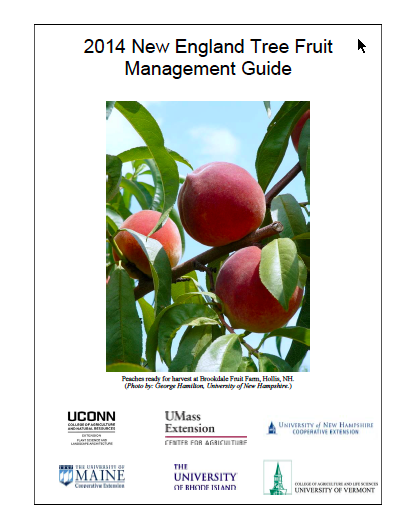
Still kind of quiet, unless you are in a winter-moth infestation are. (You probably know who you are.) Winter moth are hatching and moving into apple buds. A pyrethroid insecticide combined with B.t. (Dipel) is the gold-standard treatment for winter moth. I often get questions about oil application for red mite and scale. Rates, timing, temperature issues. In Guest article II below, Amy Irish-Brown of Michigan State University gives a nice summary of issues related to oil application. We too have seen greater incidence of San Jose Scale on apple. As you can see, it's not too late to apply. JC
2014 UMass Amherst Apple Scab Maturity Report for April 22, 2014
No mature ascoposres were observed from 10 pseudothecia in dry squash mounts. Asci were more developed than those examined a week ago. Mature ascospores (15 total) were seen on slides from a petri plate assay (leaves were soaked in water to force release). This is significantly more than were seen a week ago. From this we conclude that scab in orchards near Amherst and orchards at similar elevations and latitudes will have some mature ascospores to release during the next infection event. (Which may have occurred the evening of 22-April into the day of 23-April. JC)
Increasing Branching on Tall Spindle Apple Trees
Duane Greene, UMass Amherst
One of the important characteristics of a tall spindle apple tree is numerous lateral branches or feathers. All too frequently trees come from the nursery with inadequate lateral branches (i.e. akin to 'whips') and during the first year in the ground equally frequently few are produced. There is something that you can do to improve the potential bearing surface on these trees and now is the time to do it.
Notching is a technique that involves cutting through the bark above a bud down to the secondary xylem (wood). We have found that making a notch above buds with a hack saw blade is effective and rapid. A cut above the bud extending about 1/3 of the way around the stem is appropriate. The time to do this is between 6 and 2 weeks before bloom. The second method is to apply 350 to 500 ppm Promalin or BA (MaxCel). I do not recommend using Promalin since it will inhibit flowering for next year. BA will not affect flowering. Either technique can be moderately successful but if they are combined a much higher percent of branching will be possible.
Now is the appropriate time to notch buds. We suggest that you select appropriately spaced buds and notch them as soon as you can. Notching several buds on a tree can be done with a hack saw blade and it requires no more than about 30 seconds per tree. The larger the bud that is notched the greater the chance that the bud will break and grow into a short branch. Previously, we waited to apply the MaxCel until some leaf area emerged to improve absorption of the BA. Work by Steve McArtney in North Carolina showed that application of BA immediately after notching was effective as well. We suggest that a rate of BA of about 400 ppm is appropriate and this rate should be used. Apply MaxCel after notching or up to about 2 weeks after notching. As always, we suggest that you leave at least five trees untreated so that you can assess just how well this treatment worked for you in this orchard.
(Ed. note. See 'Using Heading vs. Notching With or Without BA Application to Induce Branching in Non-feathered, First-leaf Apple Trees' in UMass Fruit Notes, Vol. 75., No. 3)
Overwintering and Spring Pest Activity
Alan Eaton, Extension Specialist, IPM, University of New Hampshire
Reprinted from New Hampshire IPM Newsletter, April 22, 2014
Especially for insects, the overwintering stage affects how quickly a pest can begin attacking your crop. If it is in the adult stage, it may be ready to feed, or lay eggs right away. If it overwinters in a different stage, then it usually takes longer to become an active threat. Tarnished plant bugs and pear psyllas overwinter as adults, and are ready to attack your fruit trees as soon as the weather warms in the spring. Typhlodromus pyri (predator mites) overwinter under scales of bark near the base of fruit tree trunks. They begin activity after the buds have opened and weather warms. I expect their numbers to be low this year, from the long, cold winter.
Apple grain aphids (AGA), European red mites (ERM), and Eastern tent caterpillars overwinter as eggs. AGA hatch and start feeding on the opening apple buds right away, but are not a problem. ERM eggs usually hatch during the pink stage of apples. For years, tent caterpillar eggs hatched on or about April 15th in southern NH, but in recent years that has shifted earlier. We’ll see if it is back to April 15th this year. Plum curculios are still in leaf litter in the woods. It will be late May or June before they become active. Codling moths overwinter in cocoons the caterpillars constructed last fall. They are usually on the trunk, well camouflaged in bark crevices. The caterpillars that survive the winter transform into pupae in the spring. The adults emerge in June. Green pug caterpillars are a problem for some growers during bloom. They overwinter as eggs that were laid on the buds last year. The eggs usually hatch in April, when new apple foliage emerges from the buds. I do not know how sensitive they are too cold winter temperatures. Since they are exposed, maybe fewer of them will survive than usual this year. Tentiform leafminers are in the pupal stage, in mines in dead apple leaves on the ground. The adults emerge starting at about ½ inch green stage.
Fungi: Understanding how & when the fungal pathogens overwinter helps us understand where sanitation might help, and when attack might begin. Apple scab fungus overwinters in last year’s dead leaves. Over the fall and winter, inside the leaves, the fungus produced perithecia which are now filled with sacs containing the ascospores. As spring advances, the ascospores mature. When daytime rains fall, the mature spores get released. In New England, North American brown rot fungus overwinters in cankers. The fungus produces conidia in spring, which are splash spread. The European brown rot fungus (Monilinia laxa) overwinters the same way here. Farther south, North American brown rot fungus also overwinters in mummified fruit. The fungus can produce apothecia from mummies on the ground, if conditions are right. Mummyberry fungus overwinters in last year’s mummified blueberries, on the ground. When the blueberry buds open and green tissue is available to attack, the fungus grows a stipe out of the old berry. It opens into a cup, and releases ascospores during rainy weather.
Considerations for effective and safe use of dormant oil on San Jose scale in apples
Amy Irish Brown and Phil Schwallier, Michigan State University Extension
Reprinted from Fruit-MSU News 4-15-14
Michigan State University Extension educators and growers around the state reported higher than normal San Jose scale numbers on apple fruit in bins in 2013. Dormant oil is an effective method to control San Jose scale and should be considered for use in 2014 if the weather and growth stages are right.
The term “dormant” in dormant oil can be a little misleading as the more commonly used timing is delayed dormant, or as close to green tip as possible and up until the pink stage. Keep in mind that oil and green tissue are not very compatible. Phytotoxic damage to buds, blossoms and fruitlets is possible, thus care must be taken to avoid weather extremes. Do not use oil sprays 48 hours before and after a frost event. Avoid using oils in very hot (over 85 degrees Fahrenheit) and humid conditions.
Good coverage is important for all spray applications and especially when using oil to target San Jose scale where the treatment target is on and under bark scales where the overwintering scales are. A common way to use dormant oil is 2 gallons/100 at 100 gallons of water per acre at green tip with copper. Some growers will break up their oil applications into two sprays: once at green tip with copper and another at 1 gallon/100 at tight cluster with Lorsban.
Rates need to be reduced as the oil is applied closer to pink. Spur and bud damage is a high risk at pink and should be down to no more than 1 gallon oil/100. Late applications will offer the best help to control scale and mites and adding Lorsban or another insecticide will help control rosy aphids.
Different crop protection retailers have different products and they all work similarly. Be sure to work closely with your spray salesperson for the best recommendation and use of their products. Dormant oil needs to be applied with care and attention to the weather conditions before and after the application.
Follow me (jmcextman) on FB: https://www.facebook.com/jmcextman
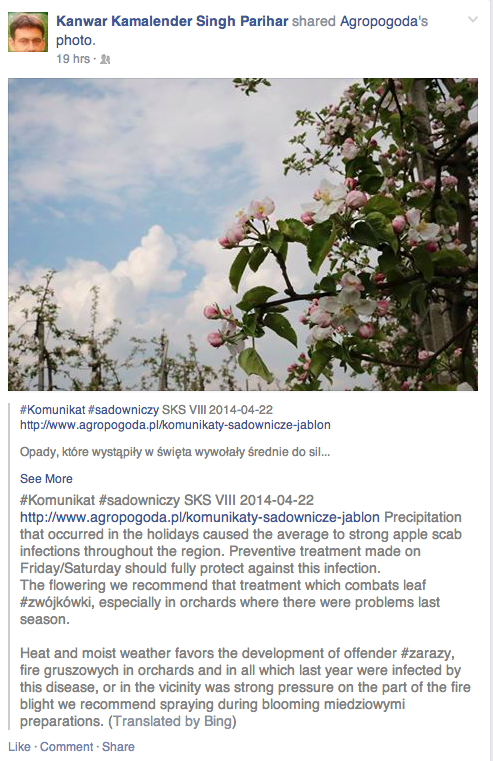
UMass Fruit Advisor: http://umassfruit.com
Scaffolds Fruit Journal: http://www.nysaes.cornell.edu/ent/scafolds/
Network for Environment and Weather Applications (NEWA): http://newa.cornell.edu
Follow me on Twitter (http://twitter.com/jmcextman) and Facebook (http://www.facebook.com/jmcextman)
UMass Vegetable & Fruit IPM Network (on Facebook, http://www.facebook.com/umassipmteam)
The next Healthy Fruit will be published on Tuesday, April 29 or thereabouts, 2014. As always feel free to get in touch with any member of the UMass Fruit Team (http://extension.umass.edu/fruitadvisor/team-members) if you have questions or comments.